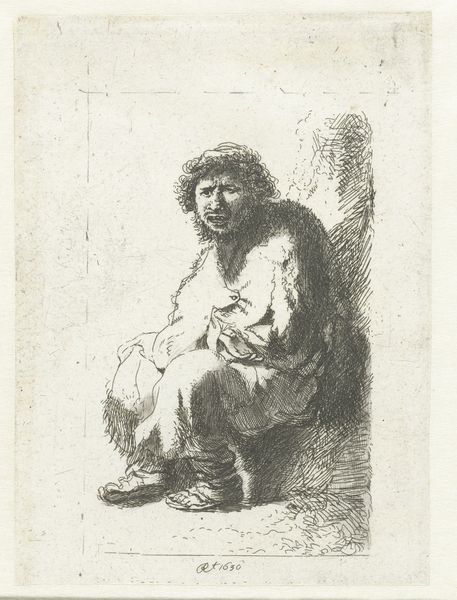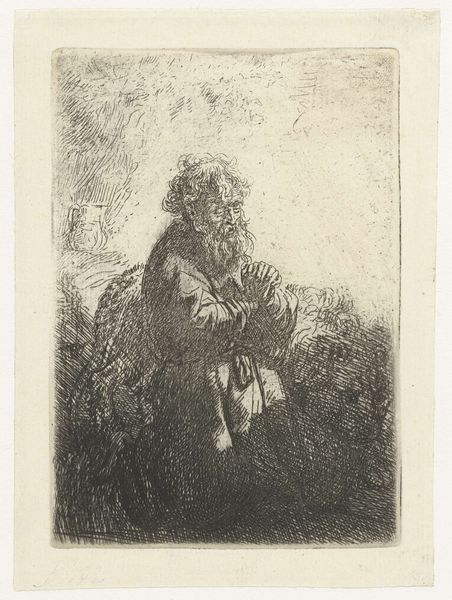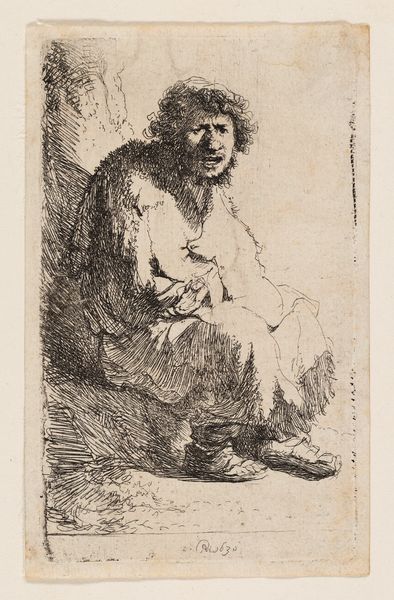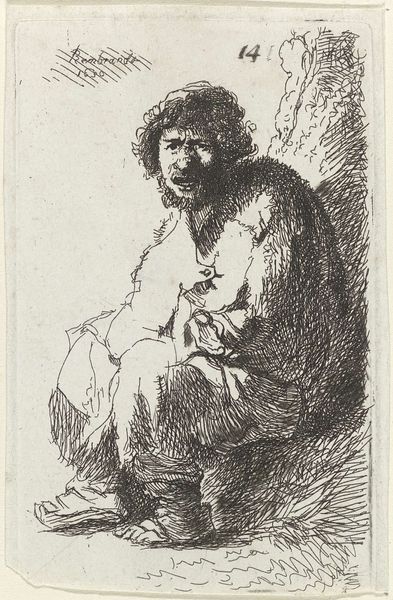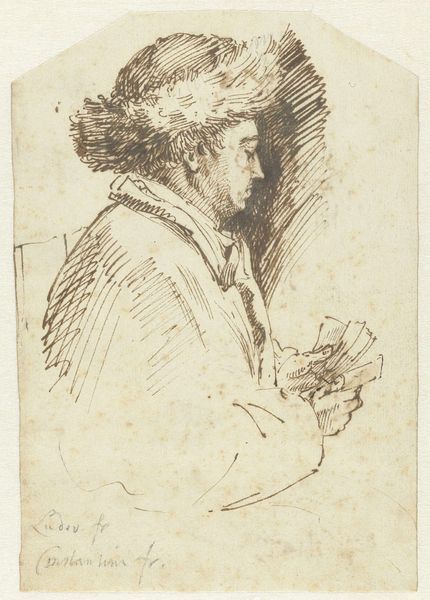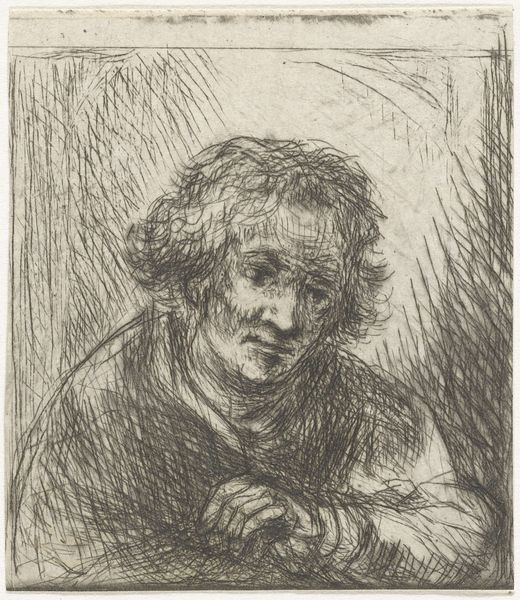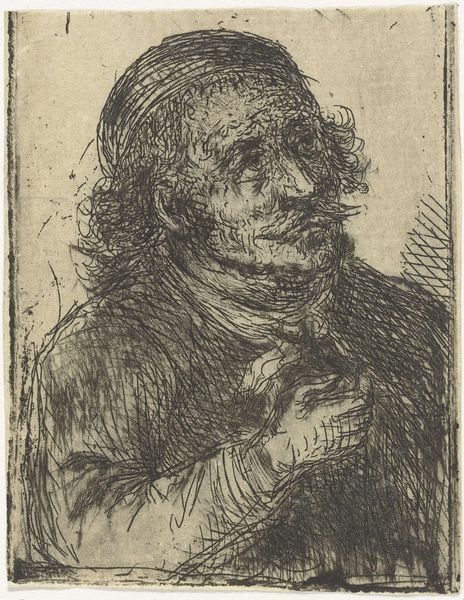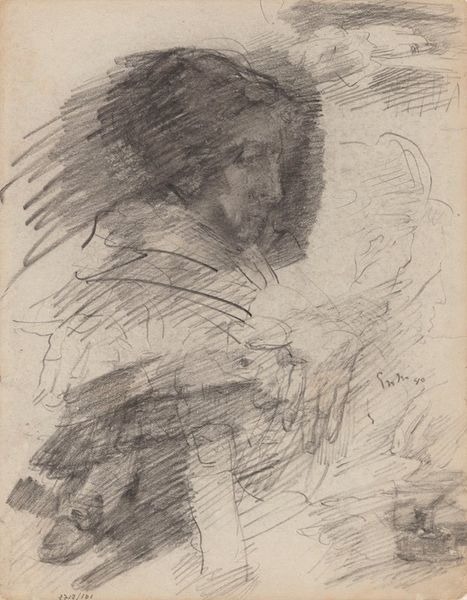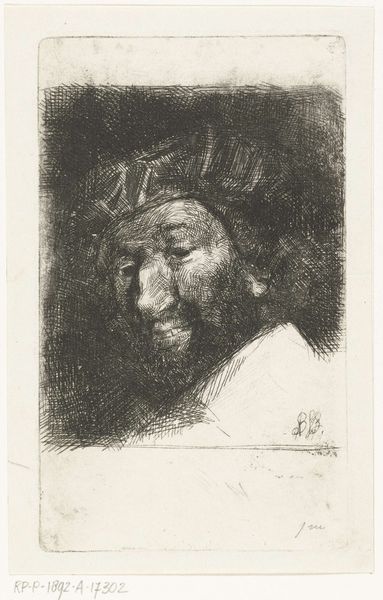
etching
#
portrait
#
baroque
#
etching
#
genre-painting
#
realism
Dimensions: height 116 mm, width 70 mm
Copyright: Rijks Museum: Open Domain
Curator: Let’s turn our attention to "Beggar Seated on a Bank," an etching created around 1630 by Rembrandt van Rijn, currently residing here at the Rijksmuseum. Editor: My immediate reaction is one of somber reflection. There's a weightiness here, a rawness conveyed through those stark lines and that slightly larger size adds an element of immediacy. Curator: Absolutely, the medium of etching itself contributes significantly. The cross-hatching and drypoint create this interplay of light and shadow, revealing form in a compelling way. Consider the construction of the beggar's figure; it’s all lines implying volume, and tone. Editor: And how that posture resonates across time! The hunched shoulders, the weary expression. This resonates universally with archetypes of poverty and marginalization; It is very empathetic Curator: Precisely. The realism here is striking, yet it's realism imbued with symbolism. The beggar's clothing speaks to a life worn down. What he symbolizes within our broader understanding of society’s forgotten. Editor: True, you are looking at symbols of people discarded. This image would fit into a historical lineage extending far back beyond the seventeenth century: mendicants, vagrants. Yet, Rembrandt elevates the beggar beyond a simple stereotype through individualizing features and emotional cues. Curator: I agree, there's a remarkable tension. The etching itself forces us to consider how form gives rise to feeling; The composition—how the figure occupies the frame—dictates our reception of this symbol. Editor: It brings us face to face, prompting a quiet encounter across the centuries. Ultimately this piece remains potent through this capacity to reflect timeless themes of humanity’s shared conditions Curator: Indeed. Studying the etcher's skillful composition against his social subject and his use of materials expands not only what we consider technically ingenious but, perhaps more importantly, what remains human. Editor: What an impactful reminder! Thank you!
Comments
rijksmuseum about 2 years ago
⋮
This beggar extends his hand for alms and calls out to us. Quite surprisingly, Rembrandt gave this figure his own face. Whether by doing so he identified with the world’s outcasts is unclear. What is certain is that Rembrandt depicted them often in these early years, and unlike his colleagues he did so without scorn or ridicule.
Join the conversation
Join millions of artists and users on Artera today and experience the ultimate creative platform.
